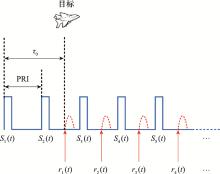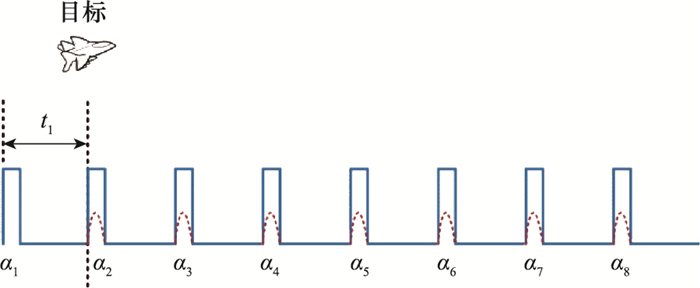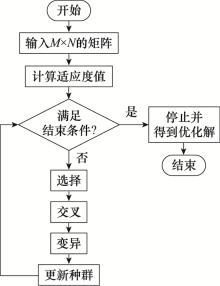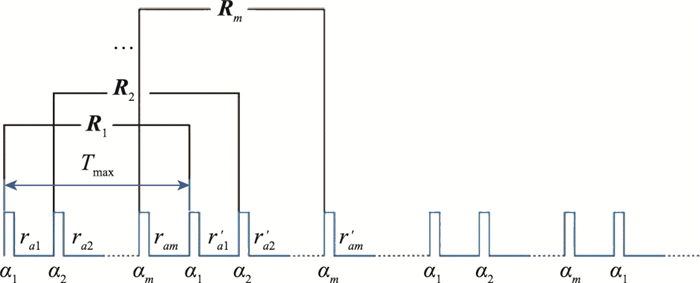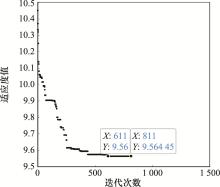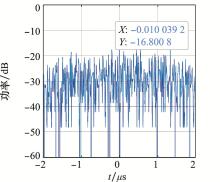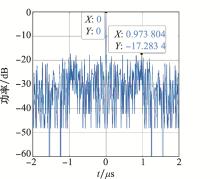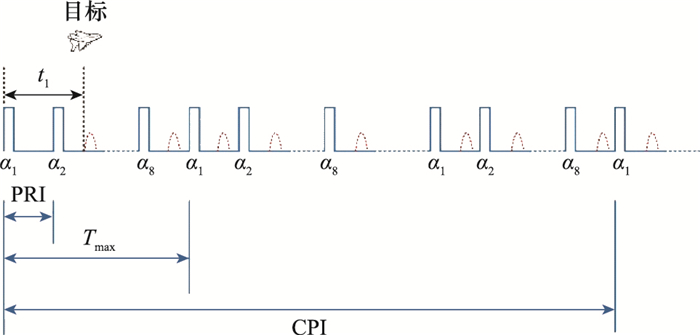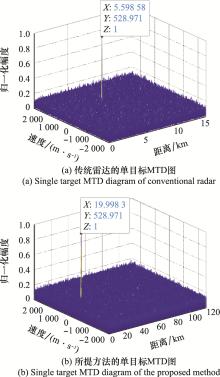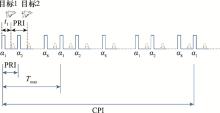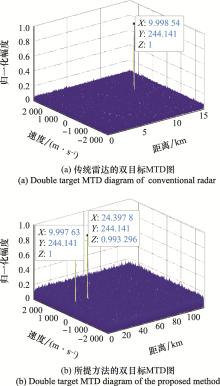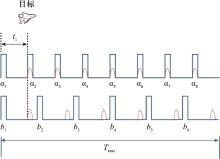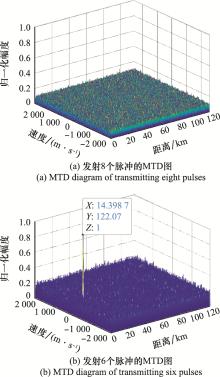| 1 |
吴曼青. 数字阵列雷达的发展与构想[J]. 雷达科学与技术, 2008, 6 (6): 401- 405.
doi: 10.3969/j.issn.1672-2337.2008.06.001
|
|
WU M Q . Development and future design of digital array radar[J]. Radar Science and technology, 2008, 6 (6): 401- 405.
doi: 10.3969/j.issn.1672-2337.2008.06.001
|
| 2 |
YEARY M, PALMER R, FULTON C, et al. Update on an S-band all-digital mobile phased array radar[C]//Proc. of the IEEE Radar Conference, 2021.
|
| 3 |
CASTILLO-RUBIOC F, PASCUAL J M. Current full digital phased-array radar developments for naval applications[C]//Proc. of the IEEE International Symposium on Phased Array System & Technology, 2019.
|
| 4 |
DUAN J Q , HE Z S , QIN L . A new approach for simultaneous range measurement and Doppler estimation[J]. IEEE Geoscience and Remote Sensing Letters, 2008, 5 (3): 492- 496.
doi: 10.1109/LGRS.2008.923210
|
| 5 |
LULU A , MOBASSERI B G . Phase matching of coincident pulses for range-Doppler estimation of multiple targets[J]. IEEE Signal Processing Letters, 2019, 26 (1): 199- 203.
doi: 10.1109/LSP.2018.2885215
|
| 6 |
TRUNK G, BROCKETT S. Range and velocity ambiguity resolution[C]//Proc. of the Record of the IEEE National Radar Conference, 1993: 146-149.
|
| 7 |
ZHU J, LI Y, DUAN C D, et al. A range and velocity ambiguity resolution method based on ambiguity matrix completion and elimination with low SNR[C]//Proc. of the IEEE International Conference on Signal, Information and Data Processing, 2019.
|
| 8 |
ZHU X G, CUI Z, CUI W, et al. Range and velocity ambiguity resolution based on screening method[C]//Proc. of the IET International Radar Conference, 2009.
|
| 9 |
孟飞, 谢良贵, 李饶辉. 一种脉冲多普勒雷达解速度模糊新方法[J]. 系统工程与电子技术, 2009, 31 (4): 791- 794.791-794, 808
doi: 10.3321/j.issn:1001-506X.2009.04.015
|
|
MENG F , XIE L G , LI R H . Novel method of velocity ambiguity resolution in pulse Doppler radar[J]. Systems Engineering and Electronics, 2009, 31 (4): 791- 794.791-794, 808
doi: 10.3321/j.issn:1001-506X.2009.04.015
|
| 10 |
LAN X, ZHANG M. Solution to range and velocity ambiguities based on frequency diversity MIMO radar[C]//Proc. of the IEEE International Symposium on Electromagnetic Compatibility and IEEE Asia-Pacific Symposium on Electromagnetic Compatibility, 2018: 845-847.
|
| 11 |
JIAO M, JIANG L, ZOU B, et al. Adaptive velocity ambiguity resolution algorithm based on gradient descent[C]//Proc. of the IET International Radar Conference, 2020: 1033-1036.
|
| 12 |
SAKAMOTO T , MATSUOKA A , YOMO H . Estimation of Doppler velocities from sub-nyquist ultra-wideband radar measurements[J]. IEEE Sensors Journal, 2016, 16 (23): 8557- 8565.
|
| 13 |
HU J M, LU D W, LIAO Z K, et al. Range ambiguity resolution for high PRF radar with random frequency hopping waveforms[C]//Proc. of the IEEE International Conference on Digital Signal Processing, 2016: 70-73.
|
| 14 |
OMAR S M, KASSEM F, MITRI R, et al. A novel barker code algorithm for resolving range ambiguity in high PRF radars[C]//Proc. of the European Radar Conference, 2015: 81-84.
|
| 15 |
SHUKLA A K, AGARWAL A, AUROBINDO K. Eclipsing loss and HPRF selection for airborne radar[C]//Proc. of the European Radar Conference, 2009: 525-528.
|
| 16 |
王莹, 苏宏艳, 朱淮城, 等. HPRF PD末制导雷达抗遮挡方法设计[J]. 微波学报, 2010, 26 (S1): 631- 634.
|
|
WANG Y , SU H Y , ZHU H C , et al. Anti-range eclipse method designing for high PRF PD guiding radar[J]. Journal of Microwaves, 2010, 26 (S1): 631- 634.
|
| 17 |
WANG W Q . Mitigating range ambiguities in high-PRF SAR with OFDM waveform diversity[J]. IEEE Geoscience and Remote Sensing Letters, 2013, 10 (1): 101- 105.
doi: 10.1109/LGRS.2012.2193870
|
| 18 |
AXELSSON S R J . Suppressed ambiguity in range by phase-coded waveforms[J]. Proc.of the IEEE International Geoscience and Remote Sensing Symposium, 2001, 5, 2006- 2009.
|
| 19 |
BAE J, GOODMANN A. Adaptive PRF selection technique for multiple targets in track-before-detect[C]//Proc. of the 5th IEEE International Workshop on Computational Advances in Multi-Sensor Adaptive Processing, 2013: 448-451.
|
| 20 |
TRUNKG V, KIMM W. Multiple target ambiguity resolution[C]//Proc. of the IEEE National Radar Conference, 1994: 91-94.
|
| 21 |
HUANG Z X, WAN Z. Range ambiguity resolution in multiple PRF pulse Doppler radars[C]//Proc. of the IEEE International Conference on Acoustics, Speech, and Signal Processing, 1987 : 1786-1789.
|
| 22 |
HUANG X D, WANG H J, HUANG G M, et al. Doppler shift detection based on chinese remainder theorem and spectrum correction[C]//Proc. of the IEEE 23rd International Conference on Digital Signal Processing, 2018.
|
| 23 |
LI Y, XU C M, YAN X, et al. An improved algorithm for Doppler ambiguity resolution using multiple pulse repetition frequencies[C]//Proc. of the 9th International Conference on Wireless Communications and Signal Processing, 2017.
|
| 24 |
李萌辉, 李明. 基于一维集搜索方法的PD雷达解距离模糊高效算法[J]. 电子信息对抗技术, 2010, 25 (5): 22- 25.22-25, 54
doi: 10.3969/j.issn.1674-2230.2010.05.004
|
|
LI M H , LI M . A high efficienty algorithm of PD radar for range ambiguity resolution based on the one-dimension method[J]. Electronic Information Warfare Technology, 2010, 25 (5): 22- 25.22-25, 54
doi: 10.3969/j.issn.1674-2230.2010.05.004
|
| 25 |
LEI W, LONG T, HAN Y Q. Resolution of range and velocity ambiguity for a medium pulse Doppler radar[C]//Proc. of the IEEE International Radar Conference, 2000: 560-564.
|
| 26 |
SATO R, SHINRIKI M. Time sidelobe reduction technique for binary phase coded pulse compression[C]//Proc. of the IEEE International Radar Conference, 2000: 809-814.
|
| 27 |
RICHARDSM A , SCHEERJ A , HOLMW A . Principles of modern radar Vol. Ⅰ: basic principles[M]. Raleigh: SciTech Publishing, 2010.
|
| 28 |
SONG Y K , JIN T , SONG Y P , et al. An improved radon-Fourier transform coherent integration method[J]. IEEE Access, 2019, 7, 138593- 138602.
doi: 10.1109/ACCESS.2019.2942168
|
| 29 |
LI W J , YI W , WEN M , et al. Multi-PRF and multi-frame track-before-detect algorithm in multiple PRF radar system[J]. Signal Processing, 2020, 174, 107648.
doi: 10.1016/j.sigpro.2020.107648
|
| 30 |
SARVESTANIA R H, NIKAKHTAR A, MANSHADIH R D. Eclipsing loss minimizing based on PRF design in HPRF Radars[C]//Proc. of the 6th Iranian Conference on Radar and Surveillance Systems, 2019.
|
| 31 |
ZHONG W, XIA D, CHEN Q. Radar waveform design based on phase coded signal[C]//Proc. of the IEEE 4th International Conference on Image, Vision and Computing, 2019: 737-741.
|
| 32 |
SUN Y, HE Z S, LIU H M, et al. Binary orthogonal code design for MIMO radar systems[C]//Proc. of the International Symposium on Intelligent Signal Processing and Communication Systems, 2010.
|
| 33 |
PEI B N, PEI T D, ZHANG H S. Orthogonal waveform design of MIMO radar based on Niche genetic algorithm[C]//Proc. of the IEEE International Conference on Signal Processing, Communications and Computing, 2020.
|
